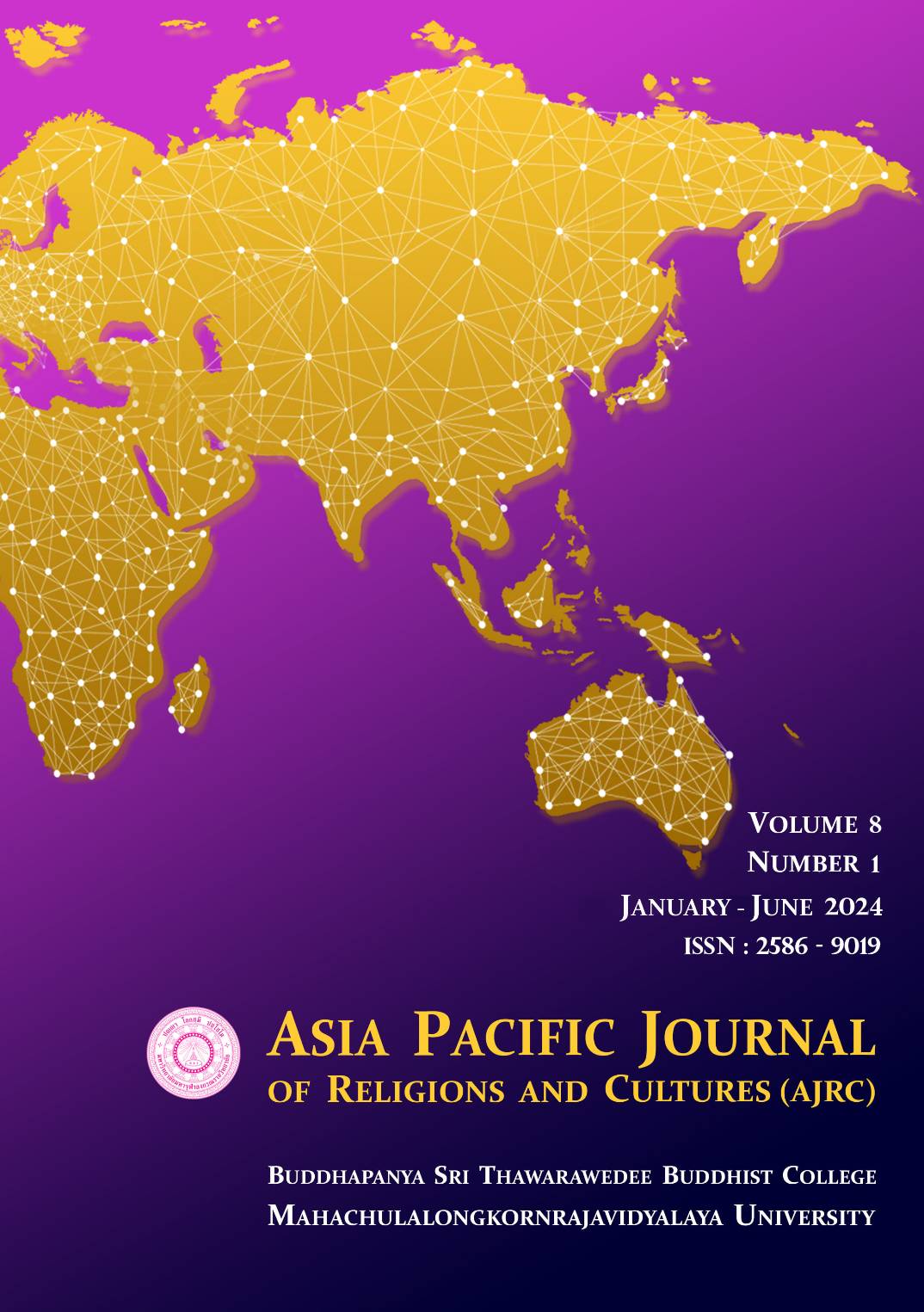The Singing Technique of Li Dongping in Guangxi's Niu Ge Folk Opera: A Cultural and Historical Analysis
Main Article Content
Abstract
Niu Ge Folk Opera, deeply rooted in the cultural heritage of Guangxi province, serves as a vibrant tapestry of local narratives, customs, and beliefs. Ms. Li Dongping, a luminary within this tradition, captivates audiences with her emotive delivery and profound musicality. This study investigates Li Dongping's singing technique in Niu Ge Folk Opera performances within the cultural and historical context of Guangxi, shedding light on her contributions' profound cultural and historical significance. Through a multidisciplinary research approach drawing upon cultural anthropology, ethnomusicology, and performance studies, this research elucidates Ms. Li's mastery of traditional singing techniques and the enduring relevance of Niu Ge Folk Opera as a vital component of Guangxi's cultural identity. Field observations, interviews, and document analysis form the basis of data collection, providing valuable insights into Ms. Li's artistry and the context of Niu Ge Folk Opera. Thematic analysis and Interpretative Phenomenological Analysis (IPA) facilitate the interpretation of data, revealing Ms. Li's nuanced approach to breath control, vocalization, and character portrayal. The findings underscore the importance of preserving traditional art forms and celebrating the role of individual performers in safeguarding intangible cultural heritage. By fostering dialogue and collaboration between practitioners, scholars, and enthusiasts, this research promotes cultural diversity and exchange while enriching our understanding of Guangxi's cultural landscape.
Article Details

This work is licensed under a Creative Commons Attribution-NonCommercial-NoDerivatives 4.0 International License.
References
Bourdieu, P. (1986). The forms of capital. In J. Richardson (Ed.), Handbook of Theory and Research for the Sociology of Education (pp. 241-258). Greenwood Press.
Cai, S., & Dunn, E. (2020). Xiangsheng and the emergence of Guo Degang in contemporary China. London: Palgrave Macmillan.
Chung, F. M. Y. (2022). Safeguarding traditional theatre amid trauma: career shock among cultural heritage professionals in Cantonese opera. International Journal of Heritage Studies, 28(10), 1091-1106.
Creswell, J. W., & Poth, C. N. (2018). Qualitative Inquiry and Research Design: Choosing Among Five Approaches. Sage Publications.
Dongliang, M. (2010). The influence of social traditional culture on the spread of contemporary cow opera culture. Arts Exploration, 24, 50-53.
Editorial Group of Tengxian Niu Ge Folk Opera Journal. (1986). Chinese Opera Records: Guangxi Volume. Niu Ge Folk Opera Records.
Head, P. S. (2022). The uniqueness of Cantonese opera in Hong Kong: contributions and influence by Tong Tik-sang. Journal for the Interdisciplinary Art and Education, 3(3), 143-150.
Leong, S. (2016). The spirit of Chinese creativity in twenty-first-century cantonese culture. In Collaborative Creative Thought and Practice in Music (pp. 127-141). Routledge.
Li, D. (2014). The Characteristics and Value of Pingnan Niu Ge Folk Opera. Communication and Copyright, 1, 20-25.
Li’an, C., & Yodwised, C. (2022). Chinese Art Songs in 1920-1949: Vocal Pedagogy and Singing Technique. Asia Pacific Journal of Religions and Cultures, 6(1), 64-78.
Luo, Y. (2021). Safeguarding intangible heritage through edutainment in China’s creative urban environments. International Journal of Heritage Studies, 27(2), 170-185.
Merriam, A. P. (1964). The Anthropology of Music. Northwestern University Press.
Quan, J. (2015). A Preliminary Study on the Performing Arts of Intangible Cultural Heritage of Traditional Drama: Taking Niu Ge Folk Opera in Tengxian County as an Example. Song Sea, 6, 35-38.
Schechner, R. (1988). Performance Theory. Routledge.
Stock, J. P. (2003). Huju: Traditional opera in modern Shanghai. British Academy Postdoctoral F.
Wang, M. (2002). What is Anthropology. Peking University Press.
Wu, J., Jiang, K., & Yuan, C. (2019). Determinants of demand for traditional Chinese opera. Empirical Economics, 57, 2129-2148.
Xin, P., & Roongruang, P. (2022). Exploration of vocal music teaching in Chinese opera “Regret for the past” (Shang Shi). Asia Pacific Journal of Religions and Cultures, 6(2), 103-112.
Zhang, J., Nicolas, A., & Karin, K. (2022). Examining Cultural Production and the Development of Zhuang Cultural Performances in Guangxi Province, China. The International Journal of Critical Cultural Studies, 20(1), 13-25.
Zhang, Y. (2024). Cultural Roots and Artistic Growth: Traditional Elements and Innovation in Modern Yue Opera Productions. Studies in Art and Architecture, 3(1), 21-25.
Zhao, Y., & Sornyai, P. (2024). Education and Literacy in Yue Opera: Historical Development in Shaoxing, Zhejiang Province, China. International Journal of Education and Literacy Studies, 12(1), 96-105.


